Circle of life
Exploring the life cycle of a lake
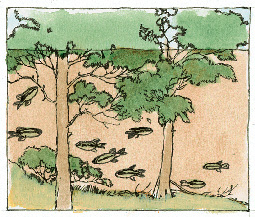
Though no one necessarily wants to face it, the loss of productivity in reservoirs and lakes comes as naturally as day turns to night.
This process is especially true when it comes to largemouth-bass productivity, which is a good measure of age for many fisheries. Oftentimes, the better the largemouth fishing, the younger the lake.
Reservoirs, once they are impounded, typically experience an explosion in biological activity for the first several years, a proliferation of productivity that in short order is felt in your wrist while holding the end of your favorite bait-casting rig. But it does not last, and that is a natural response to an unnatural situation, at least as far as man-made reservoirs are concerned.
Reservoir construction for flood control and hydropower gained serious momentum in the 1930s, creating many new fishing waters across the South and Midwest and eventually in the West. The building boom continued into the 1960s. As the dams closed and the lakes filled, a great deal of future cover for fish stood standing. Remnant trees and shrubs stood by, and the water inundated what would eventually provide a home for the basic building blocks of a fishery – cover for microscopic organisms, cover for forage and cover for predators.
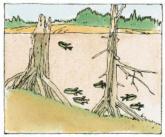 An abundance of organic matter at impoundment means there is an abundance of organic decay soon to follow, adding nutrients to the water. Bacteria and organic decay create the building blocks of fertile water. Tiny plant organisms like algae, collectively called periphyton, attach themselves to underwater structures, be they rocks, trees or anything left behind at impoundment. Periphyton are the primary producers, turning sunlight into energy. The invertebrate fish food follow, then the forage fish, and where there is forage, predators like sunfish and black bass should be there, too.
An abundance of organic matter at impoundment means there is an abundance of organic decay soon to follow, adding nutrients to the water. Bacteria and organic decay create the building blocks of fertile water. Tiny plant organisms like algae, collectively called periphyton, attach themselves to underwater structures, be they rocks, trees or anything left behind at impoundment. Periphyton are the primary producers, turning sunlight into energy. The invertebrate fish food follow, then the forage fish, and where there is forage, predators like sunfish and black bass should be there, too.
The case histories are many, documented by science and experienced by ardent anglers. There is a boom and a bust after impoundment. Initial stocked-game-fish populations benefit from the rapid productivity. Growth rates are superior, most likely due to abundant space and food, and they are aided by the lack of predators and a lack of parasites. Disease is minimal, probably because the fish populations are not crowded.
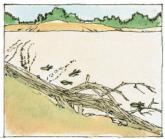 But after a few years, productivity levels off and may eventually take a turn downward. Suckers, buffalo and common carp that live in feeder streams expand into reservoirs and proliferate. Bullheads and sunfish do what they seem to do best – breed, overpopulate and eventually stunt.
But after a few years, productivity levels off and may eventually take a turn downward. Suckers, buffalo and common carp that live in feeder streams expand into reservoirs and proliferate. Bullheads and sunfish do what they seem to do best – breed, overpopulate and eventually stunt.
For example, an acre of farm field can yield only so many bushels of corn. That yield is dictated by the carrying capacity of the field. Soil moisture, soil nutrients and competing plants dictate a field’s carrying capacity for corn. The same is true for any fishery – its carrying capacity has its limitations. When nutrients and space are tied up in undesirable rough fish that take advantage of the very conditions game fish find desirable, the capacity of a body of water to produce game fish is diminished. That is why bass-bluegill combinations for smaller water bodies like farm ponds are much more manageable.
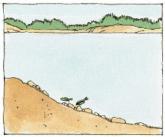 And, of course, in a complex natural world, there is more that affects carrying capacity than other co-occurring fish species. A good many other factors, both man-made and natural, affect a reservoir or lake’s ability to produce. Chief among them is changes in fertility. The age of water is also a factor. A reservoir where water is quickly passed through from its tributary waters to release below a dam is considered younger water. Older water stays put longer and is more likely to have a better chemical composition and fertility.
And, of course, in a complex natural world, there is more that affects carrying capacity than other co-occurring fish species. A good many other factors, both man-made and natural, affect a reservoir or lake’s ability to produce. Chief among them is changes in fertility. The age of water is also a factor. A reservoir where water is quickly passed through from its tributary waters to release below a dam is considered younger water. Older water stays put longer and is more likely to have a better chemical composition and fertility.
Watershed changes can have a profound influence on a reservoir or lake fishery. Serious erosion in upstream feeder streams due to agriculture, housing development and road building might increase turbidity. Increased turbidity could reduce the area of sunlight penetration along the shoreline, effectively reducing the amount of area where periphyton, the primary building blocks, can get established. As reservoirs and lakes age, changes in the amount of structure that support the periphyton and invertebrate fish-food organisms usually causes a decrease in carrying capacity and decrease in growth rates of target species.
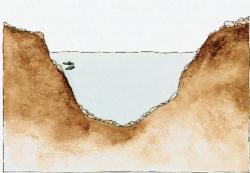 Natural lakes do not have the conspicuous boom and bust cycles as often, as the aging processes are typically much slower and often protracted on a time scale an angler could never observe.
Natural lakes do not have the conspicuous boom and bust cycles as often, as the aging processes are typically much slower and often protracted on a time scale an angler could never observe.
Natural lakes age in a process called eutrophication. In the simplest of terms, the aging process starts with aquatic and terrestrial life; aquatic plants, fish and mammals die and sink to the bottom. Wind-borne sediments settle in the water. There is input from sediments washing in the lake. Over time, the lake edges close in as sediment and organic matter build up. The bottom gets shallower. It may take a long time, but a lake’s natural process is to close in and eventually cease to exist.
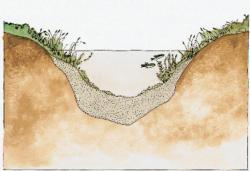 Natural lakes of advanced age are not likely to offer much in the way of fishing. Renovation – like a dragline dredge to create habitat – might take serious time and money. Some natural lakes may lack structure.
Natural lakes of advanced age are not likely to offer much in the way of fishing. Renovation – like a dragline dredge to create habitat – might take serious time and money. Some natural lakes may lack structure.
Habitat enhancement can improve bass fisheries, both in natural lakes and in post-climax reservoirs. In Kentucky, sunken cedars and plastic modules showed great promise in improving the fishery in strip-mine lakes. Of 623 bass, crappies, sunfish and catfish observed on dives, brush held 78 percent of the fish, and the plastic modules held about 17 percent. The remaining 5 percent were seen in open waters.
By design or by default, when post-climax reservoirs are drawn down for irrigation or hydropower or by evaporation, the effect on the fishery at refilling can be a good thing. Nutrients tied up in living plants are once again returned to the lake when the rising water inundates new shoreline growth and drowns it. Such as when reservoirs are initially filled, the cycle starts again, and the fish frequently experience a boom.
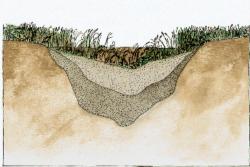 Another way that a reservoir fishery can be managed is with corrective stocking to balance out the predator-prey ratio. That essentially means stocking that could lead to a better forage base for the bass found in a reservoir. This stocking is done only after serious consideration of the ecological impact to the fishery and its potentially connected waters.
Another way that a reservoir fishery can be managed is with corrective stocking to balance out the predator-prey ratio. That essentially means stocking that could lead to a better forage base for the bass found in a reservoir. This stocking is done only after serious consideration of the ecological impact to the fishery and its potentially connected waters.
The food web can be a tangled mess when the introduced species does not serve the intended purpose. The wrong forage fish could explode in the face of predators and in effect tie up nutrients, like carp and buffalo and suckers can do in a natural invasion. The net effect is nil for game fish. Unauthorized stocking of forage fish or game fish should not even be a consideration.
Lakes and reservoirs age at different rates, with each and every water body experiencing different circumstances. Food webs and water chemistries are highly varied and complex.